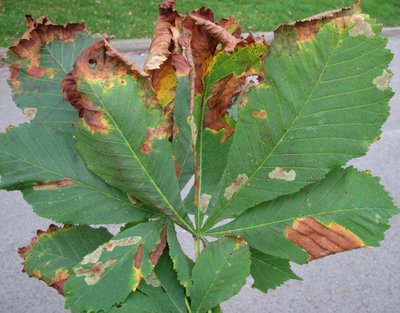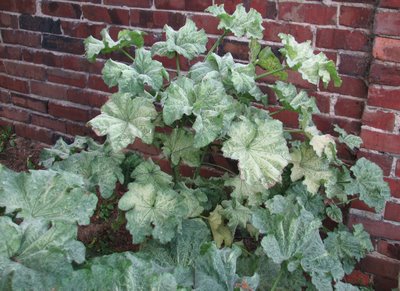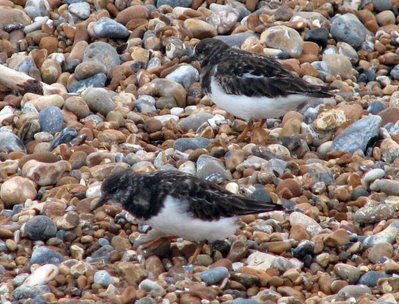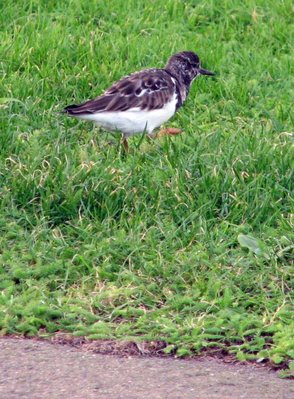
Today I found a large horse chestnut in Oaklands Park, Sedlescombe, quite heavily infested by the fairly-new-to-Britain leaf mining moth
Cameraria ohridella. I think this must already have been recorded in Sussex though I have not been able to find anything specific.
This species, which has been much in the news lately due to the damage it is doing to horse chestnut trees, was was first observed in Macedonia in the late 1970s and was described as a new species of the genus
Cameraria in 1986. In 1989 it appeared unexpectedly in Austria and has since spread throughout central and eastern Europe. It was first found in the UK in Wimbledon in July 2002 and has since been recorded in many parts of south-east England.
Brown patches on horse chestnut leaves are also caused by the fungus
Guignardia aesculi and these may be confused with mines of
C. ohridella. However,the blotches caused by the fungus are often outlined by a conspicuous yellow band and do not appear translucent when held up to the light.
In the picture above the difference between the greyish white blotches of the leaf mines and the darker brown, yellow edged patches caused by the fungus can be clearly seen.
For more details on the moth and of the Forestry Commission survey of its spread follow this
link.















